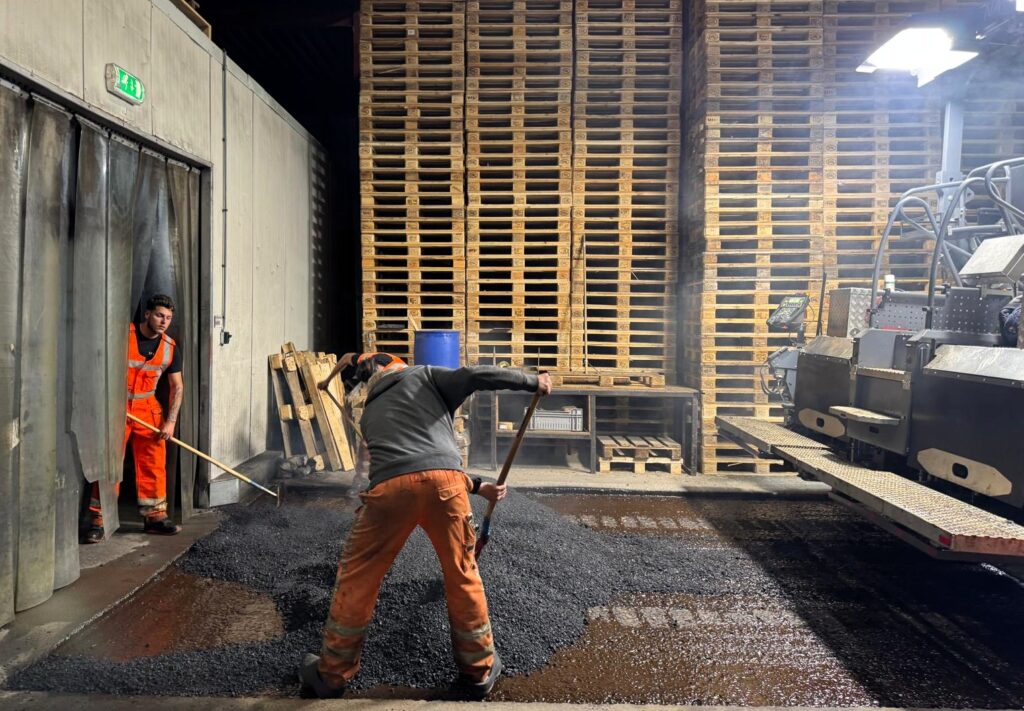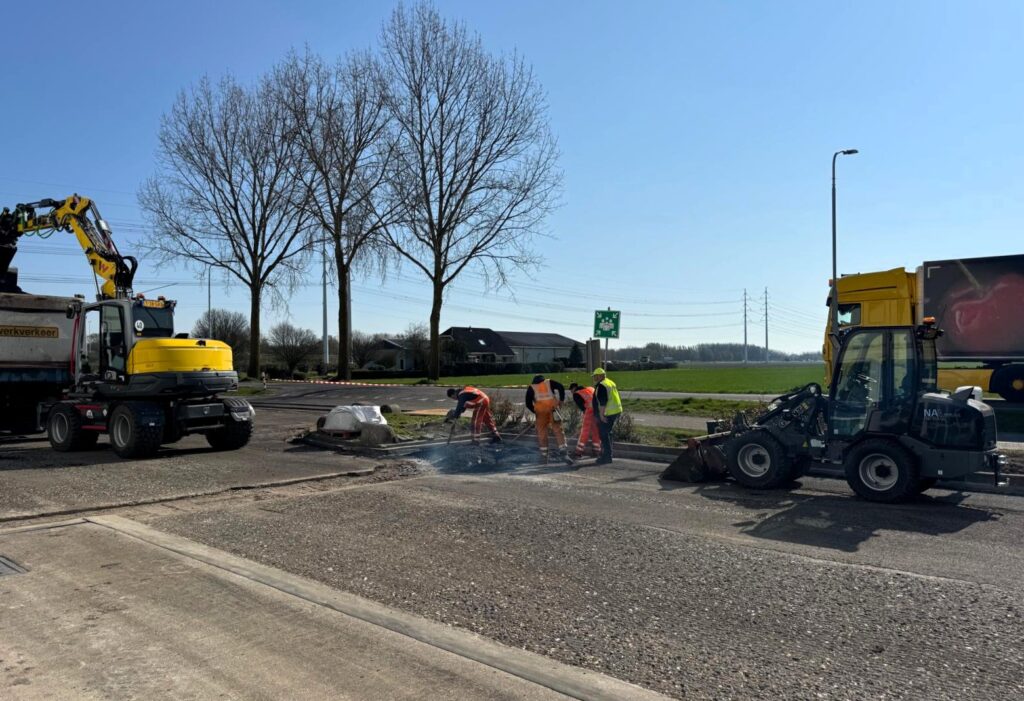‘Huzarenstukje’ helps Frigo Nieuw-Vennep get new asphalt

A daring feat. That’s how Frigo Group CEO Margreet van Elderen describes the replacement of all the asphalt at Frigo Nieuw-Vennep. The complex operation was carried out by Boskalis at the end of March/beginning of April.
Both inside, in the cold store, and outside, the asphalt was in need of replacement, according to Van Elderen. According to project manager Johan Hussaarts, the speed at which the material ages is mainly determined by weather conditions. ‘Frost, rain and sun have more influence than the pressure exerted on the asphalt, at Frigo Nieuw-Vennep by forklifts and trucks.’
Especially the forklift drivers of the logistics provider of frozen food, according to Van Elderen, were increasingly bothered by small damages in the asphalt. ‘Their driving pleasure is decisive. They have to be able to whiz around without any problems, without taking into account small holes and bumps in the asphalt.’

Tight planning
Knowing that no driving is allowed for 24 hours on a new asphalt layer, Van Elderen drew up a tight schedule in close consultation with Hussaarts. The basic principle was that the work should not affect Frigo Nieuw-Vennep’s accessibility and service. Because the forklifts are stationary at weekends, the asphalt inside was successfully replaced on Saturday 22 and Sunday 23 March. More than a week later, on Monday 31 March, it was ‘outside’’s turn. Van Elderen: ‘This was done in two phases, so Frigo Nieuw-Vennep remained “just” accessible for trucks. One half of the asphalt outside was replaced on 31 March and 1 April, the other half on 2 and 3 April. During the work, employees could park their cars at a neighbour’s house across the IJweg. For four days, two traffic controllers also directed all traffic in the right direction.’
Much more sustainable
Like Van Elderen, Hussaarts looks back on the operation with satisfaction. A nice bonus, he says, is that the new asphalt layer is a lot more sustainable than the old one. ‘These days, we use biobitumen as the binding agent. Another sustainable aspect is that about thirty per cent of the old asphalt that has been milled out has been reused in the mixture of the new asphalt layer, which means that Frigo Nieuw-Vennep can move on for another ten or fifteen years.’




